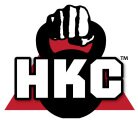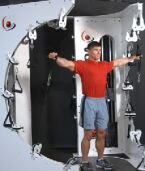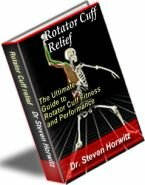Heat Injuries and Hydration Guidelines
GENERAL INTRODUCTION
Just enter your zip code and the website will give you today's heat index. Click here!
With all the information available, there are still errors made in hydration at the Olympic and professional level down to the little league level of sports. Heat illness is related to the body's ability to adapt and adjust to an increased core temperature occurring with exertion. If the rate of heat production or gain exceeds the rate of heat dissipation or loss, then hyperthermia or high internal body temperature, results.
The two most important methods of heat dissipation are radiation and evaporation. "Radiation is the transfer of heat to the environment via electromagnetic waves; it accounts for most heat dissipation. As long as there is a temperature gradient between the body and the air, 65% of the body's heat is lost by radiation. Evaporation is the transfer of heat by transformation of perspiration and saliva into a vapor; it accounts for 30% of the body's heat loss." "When air temperature exceeds 95°F (35°C), radiation of heat from the body ceases and evaporation becomes the only means of heat loss. Evaporation is maximally efficient in a dry environment. If humidity reaches 100%, evaporation of sweat is no longer possible and the body loses its ability to dissipate heat." "Initially, the body attempts to control the core temperature. A rise in body temperature activates heat receptors in both the hypothalamus and the periphery, which results in increased shunting of blood to the periphery." When this mechanism is overwhelmed, problems arise. Heat Exhaustion and Heat Stroke
Thirst alone is not a good indicator of the need for fluids. Research demonstrates that exercise in hot adverse conditions can cause dehydration in as little as 15 minutes. Drinking when in a dehydrated state can cause gastrointestinal distress. Athletes who say they cannot drink during a workout because it gives them a stomach ache may be allowing themselves to become dehydrated before they take their first drink. Dehydration is cumulative. If lost fluids and minerals go unreplaced fatigue and heat illness can result. It can manifest as heat cramps, heat exhaustion and heat stroke.
Heat cramps begin can begin as twitching of the muscles and progress to localized contractions of the muscles of the legs, arms, or abdomen. Treatment involves rest and drinking mildly salted fluid.
Heat exhaustion is a form of shock and is the third leading cause of death among young athletes. It is the inability to continue exercise in a hot environment and primarily results from sweat loss and/or inadequate fluid intake. When dehydration (especially greater than 3% of bodyweight) is superimposed on exercise heat stress, the cardiovascular system is simply unable to pump sufficient blood to meet all of the body's needs.
Signs and symptoms can include: profuse sweating, "heat sensations" on the head/shoulders/chest, weakness, "rubbery" legs, chills, anxiety, irritability, nausea, vomiting, muscle cramps, fainting, rapid and weak pulse, pale or flushed skin, disturbance of vision and incoherence. Treatment consists of rest in a cool environment, elevation of legs, pouring cool water on the skin and replacement of fluids orally or intravenously. Recovery is usually complete within 12 to 48 hours, without further complications. Athletes suffering from heat exhaustion should not be allowed to practice or compete for the remainder of that day. Heat exhaustion may be prevented by proper heat acclimatization; consuming water, electrolytes and carbohydrates to replace losses; and monitoring ambient conditions (temperature and humidity) to allow practice sessions to be tailored to the environment.
Heat stroke is a medical emergency requiring rapid diagnosis and treatment. It is an elevated core temperature above 104 degrees F (by rectal thermometer) and altered mental status. Other signs include hot and dry skin, rapid heart rate, rapid breathing, disorientation, confusion, combativeness, decreased responsiveness, coma or seizure. More than half of presenting patients are sweating, especially in cases of exertional heatstroke. Heatstroke can occur when the air temperature is as low as 41 degrees F and often occurs during the early morning. Between 1959 and 1985 there were 77 heatstroke fatalities at high school and college level.
Heatstroke commonly involves more than one factor: obesity, insufficient heat acclimatization, dehydration, lack of sleep, fever, drug or alcohol abuse. Other factors are air temperature, time of day, type of activity, exercise intensity, exercise duration, and clothing. It usually occurs among young, motivated males who push their bodies beyond the point at which they would normally stop exercise if discipline, competition, or peer pressure were not involved. Few cases of exercise-induced heatstroke have been reported among females.
The key to treatment of heatstroke is rapid cooling. Stopping the activity, removing excess clothing, getting into the shade, checking the core temperature and other vital signs and calling 911 must be done immediately. Ice water immersion or pouring ice water on the person has been described as the most efficient and rapid method of core temperature cooling. The majority of patients recover completely within one to six months.
Hyponatremia is a decrease of sodium in the blood and is caused by over-hydration. Slower runners, 4 1/2 hour plus marathoners, are affected more frequently; but this is not absolute. Mild cases may be asymptomatic, but moderate or serious cases may cause elevated BP, vomiting, altered mental status, bloating, respiratory distress, seizure or coma. No fluid should be given until urination has begun and salty foods are encouraged.
For more information on hyponatremia see Hyponatremia in Athletes
Hydration Guidelines
Thirst alone is not a good indicator of the need for fluids. Research demonstrates that exercise in hot adverse conditions can cause dehydration in as little as 15 minutes. It takes at least 7-10 days to acclimatize to the heat. Loose, light colored clothing should be worn. No rubberized suits! Weigh yourself before and after training and replace each pound lost with one pint of fluid. A 1-3% weight loss will decrease performance.
Pre-event Hydration
Check the Heat Index Tables to see if it is safe to train or compete.
- Athletes should consume 50 to 100 ounces of cool fluid above and beyond their normal intake the day before the event.
- The athlete should consume 16 to 32 ounces of water 2 hours prior to the event.
- Empty your bladder 15 minutes prior to the event.
- Drink cool water during the event as it is absorbed faster and cools the body better than warm water.
- Weigh yourself before the event/practice begins.
During-event Hydration
- Drink no more than 8-10oz per 15-20 minutes. Do not take any ephedra products. Sip the water, do not gulp it down.
Post-event Hydration
- Weight yourself after the event. Replace each pound lost with one pint of water.
- Sip the water, do not gulp it down.
- For multi-day events: Weigh yourself before the event and every morning. If you lose 1%-3% of body weight, re-hydrate by drinking 16oz per pound lost. If you lose 3%-6%, re-hydrate and back off on your training intensity the next day. If you are light-headed, fatigue more easily or sweat profusely, STOP training and do not train the rest of the day or the next day. If you lose greater than 7%, you must seek medical attention immediately!
Here is a urine color chart to help you determine your hydration status. Your urine color should be between #1 and #3 throughout the day.

NCAA GUIDELINES
The NCAA recommends the following guidelines to prevent heat illness: (from the 2008-2009 NCAA SPORTS MEDICINE HANDBOOK)- 1. An initial complete medical history and physical evaluation, followed by the completion of a yearly health-status questionnaire before practice begins, should be required. A history of previous heat illness, and the type and duration of training activities for the previous month, also are essential.
- 2. Prevention of heat illness begins with aerobic conditioning, which provides partial acclimatization to the heat. Student-athletes should gradually increase exposure to hot and/or humid environmental conditions over a period of seven to 10 days to achieve heat acclimatization. Each exposure should involve a gradual increase in the intensity and duration of exercise until the exercise is comparable to that likely to occur in competition. When conditions are extreme, training or competition should be held during a cooler time of day. Hydration should be maintained during training and acclimatization.
- 3. Clothing and protective equipment, such as helmets, shoulder pads and shin guards, increase heat stress by interfering with the evaporation of sweat and inhibiting other pathways for heat loss. Darkcolored clothing increases the bodys absorption of solar radiation. Frequent rest periods should be scheduled so that the gear and clothing can be loosened to allow heat loss. During the acclimatization process, it may be advisable to use a minimum of protective gear and clothing and to practice in T-shirts, shorts, socks and shoes. Excessive tape and outer clothing that restrict sweat evaporation should be avoided. Rubberized suits should never be used.
- 4. To identify heat stress conditions, regular measurements of environmental conditions are recommended. Use the ambient temperature and humidity to assess heat stress (see Figure 1). Utilize the wet-bulb temperature, drybulb temperature and globe temperature to assess the potential impact of humidity, air temperature and solar radiation. A wetbulb temperature higher than 75 degrees Fahrenheit (24 degrees Celsius) or humidity above 90 percent may represent dangerous conditions, especially if the sun is shining or the student-athletes are not acclimatized. A wet-bulb globe temperature (WBGT) higher than 82 degrees Fahrenheit (28 degrees Celsius) suggests that careful control of all activity be undertaken. The value for caution may need to be adjusted down when wearing protective equipment (see reference No. 6).
- 5. Dehydration must be avoided not only because it hinders performance, but also because it can result in profound heat illness. Fluid replacement must be readily available. Student-athletes should be encouraged to drink as much and as frequently as comfort allows. They should drink one to two cups of water in the hour before practice or competition, and continue drinking during activity (every 15 to 20 minutes). For activity up to two hours in duration, most weight loss represents water loss, and that fluid loss should be replaced as soon as possible. After activity, the student- athlete should rehydrate with a volume that exceeds the amount lost during the activity. A twopound weight loss represents approximately one quart of fluid loss. Urine volume and color can be used to assess general hydration. If output is plentiful and the color is pale yellow or straw-colored, the student-athlete is not dehydrated. Water and carbohydrate/electrolyte drinks are appropriate for exercise in heat. Carbohydrate/ electrolyte drinks enhance fluid intake, and the electrolytes aid in the retention of fluid. In addition, the carbohydrates provide energy and help maintain immune and cognitive function.
- 6. By recording the body weight of each student-athlete before and after workout or practice, progressive dehydration or loss of body fluids can be detected, and the potential harmful effects of dehydration can be avoided. Those who lose five percent of their body weight or more over a period of several days should be evaluated medically and their activity restricted until rehydration has occurred.
- 7. Some student-athletes may be more susceptible to heat illness. Susceptible individuals include those with: inadequate acclimatization or aerobic fitness, excess body fat, a history of heat illness, a febrile condition, inadequate rehydration, and those who regularly push themselves to capacity. Also, substances with a diuretic effect or that act as stimulants may increase risk of heat illness. These substances may be found in some prescription and over-the-counter drugs, nutritional supplements and foods. Student-athletes should be informed of and monitored for signs of heat illness such as: cessation of sweating, weakness, cramping, rapid and weak pulse, pale or flushed skin, excessive fatigue, nausea, unsteadiness, disturbance of vision and incoherency. If heat illness is suspected, prompt emergency treatment is recommended. When training in hot and/or humid conditions, student-athletes should train with a partner or be under observation by a coach or athletic trainer.
The consensus statement lists seven key recommendations for a 14-day heat-acclimatization period prior to full-scale athletic participation by secondary school students, as follows:
- 1. During the first five days of the heat-acclimatization process, athletes may not participate in more than one practice per day.
- 2. If a practice is interrupted by inclement weather or heat restrictions, the practice should recommence once conditions are deemed safe, but total practice time should not exceed three hours per day.
- 3. A one-hour maximum walk-through is permitted during the first five days of the heat-acclimatization period; however, a three-hour recovery period should be inserted between the practice and walk-through (or vice versa).
- 4. During the first two days of the heat-acclimatization period, in sports requiring helmets or shoulder pads, a helmet should be the only protective equipment permitted (goalies, as in the case of field hockey and related sports, should not wear full protective gear or perform activities that would require protective equipment). During days three through five, only helmets and shoulder pads should be worn. Beginning on day six, all protective equipment may be worn and full contact may begin.
- 5. Beginning no earlier than the sixth day and continuing through the 14th day, double-practice days must be followed by a single-practice day. On single-practice days, one walk-through is permitted, but it must be separated from the practice by at least three hours of continuous rest. When a double-practice day is followed by a rest day, another double-practice day is permitted after the rest day.
- 6. On a double-practice day, neither practices duration should exceed three hours total, and student-athletes should not participate in more than five total hours of practice. Warm-up, stretching, cool-down, walkthrough, conditioning and weight-room activities are included as part of the practice time. The two practices should be separated by at least three continuous hours in a cool environment.
- 7. Because the risk of exertional heat illnesses during the pre-season heat-acclimatization period is high, the consensus statement strongly recommends that an athletic trainer be on site before, during, and after all practices.
2003 USA TRACK AND FIELD GUIDELINES
It is recommended that long distance runners consume 1 liter of fluid for every liter lost during a race. For any race longer than one hour, the following procedure is suggested to determine individual fluid needs:
- Be properly hydrated BEFORE the workout, i.e. your urine should be very slightly yellow or clear.
- Do a warm-up to the point of lightly perspiring and urinate if necessary.
- Weigh yourself naked.
- Run for one hour at race intensity.
- Drink a MEASURED amount of fluid of your choice during the workout.
- Do not urinate during the workout.
- After the workout weigh yourself immediately on the same scale.
- Urinate and/or drink as necessary.
Use the following formula to calculate your hydration requirements:
Pre-workout body weight (kg) from Step 3: _____ kg
(To convert from pounds to kilograms, divide pounds by 2.2)
Post-workout body weight (kg) from Step 7: _____ kg
........................................................... = _____ kg of body weight lost during the workout.
.................................. _____ kg x 1000 = ______ grams of body weight lost during the workout
Grams of body weight lost + fluid (ml) consumed from Step 5 = _____ ml
The above ml of fluid is the ml of fluid per hour needed to properly hydrate.
To convert oz to ml: oz x 30 = ml.
To convert ml to oz: ml/30 = oz.
CARBOHYDRATE BEVERAGES
Carbohydrates consumed immediately after and two hours after exercise can enhance muscle glycogen restoration.(12) Most oral rehydration solution contain less than 6% carbohydrates (about 55 calories per 8oz.) because research has shown that the greatest rates of fluid absorption are usually stimulated by solution containing from 2-6% carbohydrates. Increasing carbohydrate content beyond 6% often reduces the rate of fluid absorption.(20) Research shows the 6% carbohydrate concentration is absorbed at least 30% faster than water. Higher glucose levels are maintained with ingestion of this type of beverage.(9)
Gatorade (6% carbohydrate/electrolyte solution) was absorbed significantly faster than water during both exercise and recovery periods. Exercise did not influence the absorption process.(11) Exercise performance improved significantly with carbohydrate feedings. This study recommends ingesting 30-60g/hour of carbohydrate during exercise to improve performance.(13)
Solutions with multiple transportable substrates that can stimulate several different solute transport mechanisms produce greater solute and water absorption than solutions with only a single transport medium. The 6% CHO solution containing a combination of free glucose and fructose are suggested for maximizing waster and CHO absorption.(18)
To calculate the carbohydrate percentage of any beverage:
Divide the number of grams of carbohydrate per serving (in milliliters) and multiply by 100, e.g. 14 grams per 8oz. (1oz.x30=milliliters)
14/240 mlx100= 5.83 or 6%
ELECTOLYTES
Potassium 30mg/8oz
Sodium 110 mg/8oz
FRUCTOSE BEVERAGES
When the subjects ingested the beverage every 20 minutes during two hours of exercise, the fructose beverage was not as readily available for energy as the glucose-containing beverages. The glucose polymer did not provide any metabolic advantage over the glucose-free beverage.(14) Consumption of fructose was associated with greater incidence of gastrointestinal distress due to its slow absorption rate, a greater loss of plasma volume, greater stress hormone response and substantially poor exercise performance.(17)
CARBONATED BEVERAGES
Carbonated soft drinks contain carbohydrates in a concentration of 10-11%. Compared to the typical sport drinks, such beverages are absorbed slowly. In addition, the carbonation turns into carbon dioxide gas when warmed in the stomach and can cause gastrointestinal distress. The caffeine found in many soft drinks actually increased fluid lost by stimulating urine production.(19)
SUPER ORAL REHYDRATION
A new concept of super oral rehydration has been proposed in which nutrients other than carbohydrates are also included in the beverage like amino acids. The theory needs to be confirmed.(20)
VOLUME OF FLUID INGESTED
The volume of fluid ingested is a powerful regulator of gastric emptying. There was greater gastric emptying with rehydration of 150% of fluid lost. However, this was attained via relatively large gastric fluid volume, with concomitantly large urine volumes. Thus, forced intake of a relatively dilute solution is not an effective method of rapid rehydration and may be detrimental to subsequent performance.(16)
EXERTIONAL HEAT ILLNESS
Recruits at higher risk for developing EHI (exertional heat illness) had a BMI of >22/kg/mm and 1.5 mile run time of >12 minutes. These recruits had an eightfold higher risk for developing EHI during basic training when compared to those with BMI <22 and a 1.5 mile run time of <10 minutes. Only 1/5 of male recruits met these criteria for high risk, but they accounted for nearly half of the EHI cases occurring during the 12 weeks basic training course.(10)
CHILDREN
Studies have shown that the main maturational differences to exercise in the heat (mostly sweating rate and composition) occur at late puberty and adulthood, rather than from pre- to mid-puberty.(15)
WHEELCHAIR
Individuals with spinal cord injury possess limited autonomic control of heat dissipation (sweat gland secretion, redistribution of cardiac output, vasodilation in cutaneous vessels) below the level of injury. The magnitude of their thermoregulatory impairment is related to the level and completeness of the spinal cord lesion. Other factors are impaired sympathetic cardiac stimulation which results in lower stroke volume and cardiac output and decreased venous return to the heart than that of able-bodied individuals; reduced thermoregulatory response for a given core temperature; unique movements of upper-body wheelchair propulsion, when compared to lower body exercise of equal intensity, produce enhanced strain, evidenced by greater plasma volume loss and catecholamine concentrations; medications (oxybutynin and phenoxybenzamine for bladder control) may negatively affect sweating and thermoregulation.(8)
What We Can Learn From the Korey Stringer Episode
- A doctor and ambulance should be on the field. There was no doctor nor an ambulance on the field for Kory Stringer.
- Listen to weather warnings. The heat index on the day Stringer died was 109!
See Heat Index Table
Don't practice in full pads and wear light colored jerseys!
Have a shaded area to go to when not in a play.
Have ice available and make use of it (head and neck).
Have mist sprayers available. - Pay attention to the players. Less shouting at players, more encouragement.
- Come to practice in shape - get in shape during the off season.
- Stringer vomited 5 times on the first day of practice - this is a good clue that the player is not in shape and is not heat acclimated!
- If you continue to sweat profusely after practice and the remainder of that day and night - don't practice the next day.
- Weight the players before and after practice. Stringer lost 6 lbs the first day of practice.
- Call 911 immediately. Why was Stringer in the trailer for 45 minutes and not on his way to the hospital immediately?
- Why was a 22 year old trainer attending to multi-million dollar professional football players?
- Why wasn't Stringer's temperature taken (the trainer did not even have a thermometer in the trailer)? If he was "unresponsive" what took so long to get him to the hospital!
For more information see
National Federation of High School Sports: Heat Stress and Athletic Participation
For a pdf of the Injury Prevention Guide, Click Here
|
The Ultimate Nutritional Lie Detector Test LEARN MORE 
|
Kettlebell Rehab

Click Here
To See How Kettlebells will transform your body!
Vortex Rehab

Click Here
To See How This
Revolutionary Machine
Can Help You!
Partner / Support

Loans up to 3 months - fast cash advances for up to 90 days and up to $5,000!


















